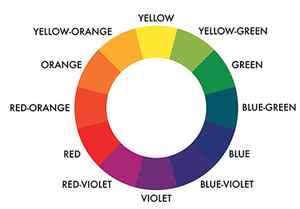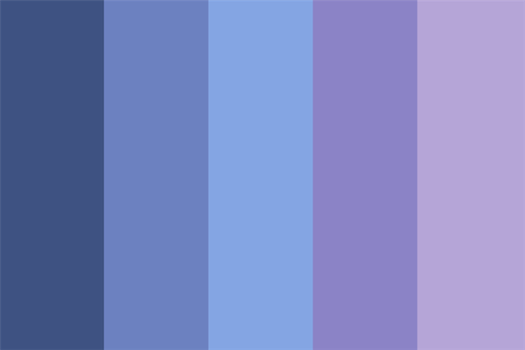The Shade of Purple That Made the World More Colorful
A sample of mauveine acetate dye probably prepared by William Henry Perkin around 1863-1864 (right). An early sample of synthetic alizarin (left) used to dye the red cloth shown. Photo by SSPL/Getty Images.
We live in a world so oversaturated with colors that it’s difficult to imagine a time before our walls bore yellow paint, our shirts blue stripes, or our bed sheets vibrant patterns.
But the world’s widespread embrace of mass-produced color is a relatively recent development; much of its advance is owed to the mistake of one amateur 18-year-old chemist working in his shoddy home laboratory in London. Sir William Perkin’s accidental discovery of the color mauve in 1856—and with it, the first aniline dye—transformed the world of fashion and influenced everything from food to photography, from medicine to military research.
Perkin did not set out to turn the world purple. In 1856, he was attempting to help cure malaria while studying at the Royal College of Chemistry. More specifically, he sought out to use thick, oily coal tar to artificially produce quinine, which, back then, was the sole, expensive cure for the disease. Perkin’s experiment accidentally yielded a bright crimson substance. He mixed it further, and it turned into a black goo. As he cleaned it out with alcohol, it turned a lustrous purple hue, which he used to stain a piece of silk cloth. Such was the first accidental use of modern synthetic dye.
Before Perkin’s discovery, dyes were produced from natural sources such as plants, insects, and minerals. These dyes were expensive and cumbersome to make, and faded quickly after laundering or sun exposure. Thus, wearing color was an unmistakable symbol of high economic status; the average person in the 1850s was typically clad in dull beiges and browns.
Portrait of William Henry Perkin, 1906. Image via Wikimedia Commons.
Silk dress dyed with William Henry Perkin’s original mauve aniline dye. Photo by SSPL/Getty Images.
Advertisement
Purple, in particular, has always held a certain allure. In the ancient world, Tyrian Purple was by far the most coveted color, made from the mucus of a single type of sea snail. The king of Phoenicia deemed it the color of royalty, and Julius Caesar wore robes dyed Tyrian Purple on the Ides of March. The dye disappeared with the dissolution of the Roman Empire. As Dan Fagin writes in his 2013 book Toms River: A Story of Science and Salvation, “The deep reddish purple of Caesar and Heracles, hue of power and wealth, monarch of colors, was no longer in the dye maker’s palette.” It would remain that way for more than a thousand years.
Then along came Perkin. While aniline had been known to have color-producing qualities for more than 30 years, nobody had seriously pursued the subject with vigorous research; it’s possible that other chemists considered dye a superficial subject unworthy of serious scientific inquiry.
Perkin shared his discovery with a friend, Arthur Church, who encouraged him to pursue further research. Both men were passionate about painting, which may have enhanced their interest in the surprising hue. Very quickly, Perkin saw the potential of his discovery through an economic lens. He dubbed the color “mauveine” and soon opened a factory, in which he developed methods for dying silk, wool, and cotton, and later, calico and paper.
At first, fabric manufacturers were highly skeptical of his new methods. But time was on Perkin’s side. In 1857, Empress Eugénie—wife of Napoleon III and a highly influential fashion icon—took a liking to mauve; the following year, Queen Victoria wore a dress of the same hue to her daughter’s wedding.
Difference Between Purple And Violet Color
Purple refers to any color of a variety of colors with hue between red and blue. On the other hand, Violet is a color named after the flower whose shade it bears. Unlike hues such as purple or green, violet is not a composite color.
Purple is closely associated with violet. In optics, purple and violet refer to colors that look similar, but purples are mixtures of red light and blue or violet light whereas violets are spectral colors (of single wavelengths of light). In common usage, both refer to colors that are between red and blue in hue, with purples closer to red and violets closer to blue.
In the RGB color model used in computer and television screens, violet is produced by mixing red and blue light, with more blue than red. In the RYB color model historically used by painters, violet is created with a combination of red and blue pigments and is located between blue and purple on the color wheel. In the CMYK color model used in printing, violet is created with a combination of magenta and cyan pigments, with more magenta than cyan.
Violet and purple have a long history of association with royalty, originally because purple dye was extremely expensive in the antiquity. The emperors of Rome wore purple togas as did the Byzantine emperors. During the middle Ages, violet was worn by bishops and university professors and was often used in art as the color of the robes of the Virgin Mary. In Hinduism and Buddhism, violet is associated with the Crown Chakra whereas in Europe and United States, violet is the color people most often associate with extravagance and individualism.
What You Need To Know About Purple Color
- Purple is a composite color made by combining blue and red. In other words, it is not a spectral color.
- Purple has more red or rather an equal amount of red and blue.
- Purple has many variations, such as violet and amethyst, depending on the proportions of the two primary colors.
- Purple color has a very bold and distinct color.
- The purple color was not accepted by Newton in his color wheel. We can only see violet color in Newton’s wheel.
- The hex code for Purple is #A020F0.
- Purple combines well with blues, greens, oranges and its complementary color, yellow, but it also combines well with other shades and tones of purple.
- Violet is a true color with its own wavelength on the spectrum of visible light. It is not a composite color.
- Violet has more blue than red.
- Violet is a single shade.
- Violet is not distinct as compared with the purple color. Sometimes it appears nearly as bluish and sometimes almost blue.
- Violet color was understood as a fundamental color in Newton’s color wheel.
- The hex code for violet is #8F00FF.
- Violet combines well with its complementary color, yellow. You can also combine it with blues and greens to add depth to your design.
Difference Between Purple And Violet Color In Tabular Form
| BASIS OF COMPARISON | PURPLE COLOR | VIOLET COLOR |
| Description | Purple is a composite color made by combining blue and red. In other words, it is not a spectral color. | Violet is a true color with its own wavelength on the spectrum of visible light. It is not a composite color. |
| Color Combination | Purple has more red or rather an equal amount of red and blue. | Violet has more blue than red. |
| Shades | Purple has many variations. | Violet is a single shade. |
| Nature | Purple color has a very bold and distinct color. | Violet is not distinct as compared with the purple color. |
| Newton’s Color Wheel | The purple color was not accepted by Newton in his color wheel. We can only see violet color in Newton’s wheel. | Violet color was understood as a fundamental color in Newton’s color wheel. |
| Hex Code | The hex code for Purple is #A020F0. | The hex code for violet is #8F00FF. |
| Complimentary Color | Purple combines well with blues, greens, oranges and its complementary color, yellow, but it also combines well with other shades and tones of purple. | Violet combines well with its complementary color, yellow. You can also combine it with blues and greens to add depth to your design. |
- Difference Between Lavender And Violet Color
- Difference Between Cream And Ivory Color
- Difference Between Lavender And Lilac (Color & Flower)
- Difference Between Beige And Cream Color
- Difference Between Colors Blue And Indigo




